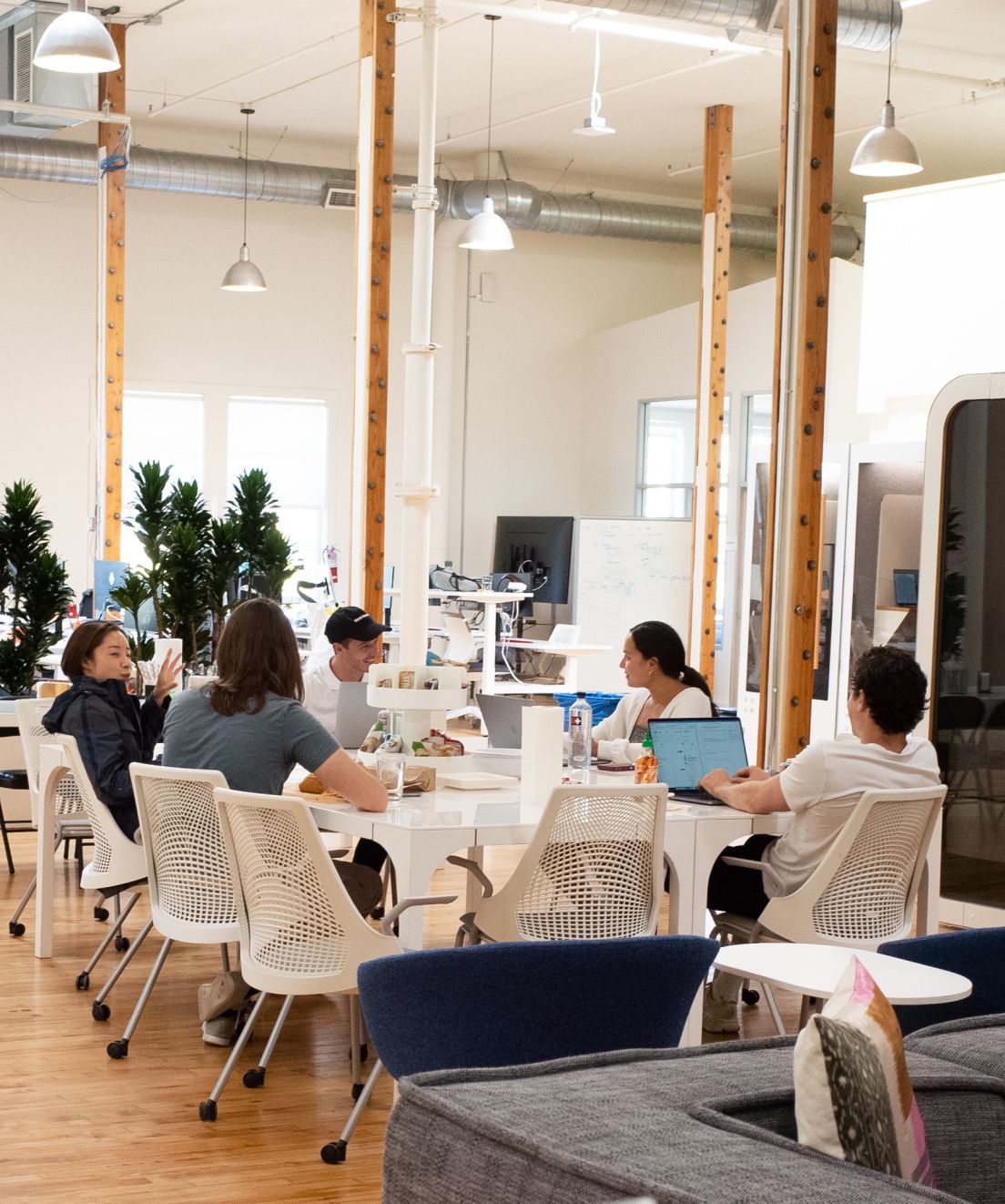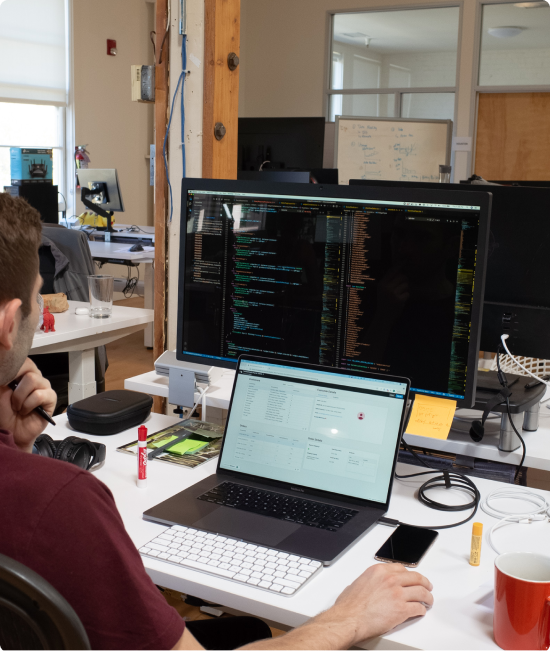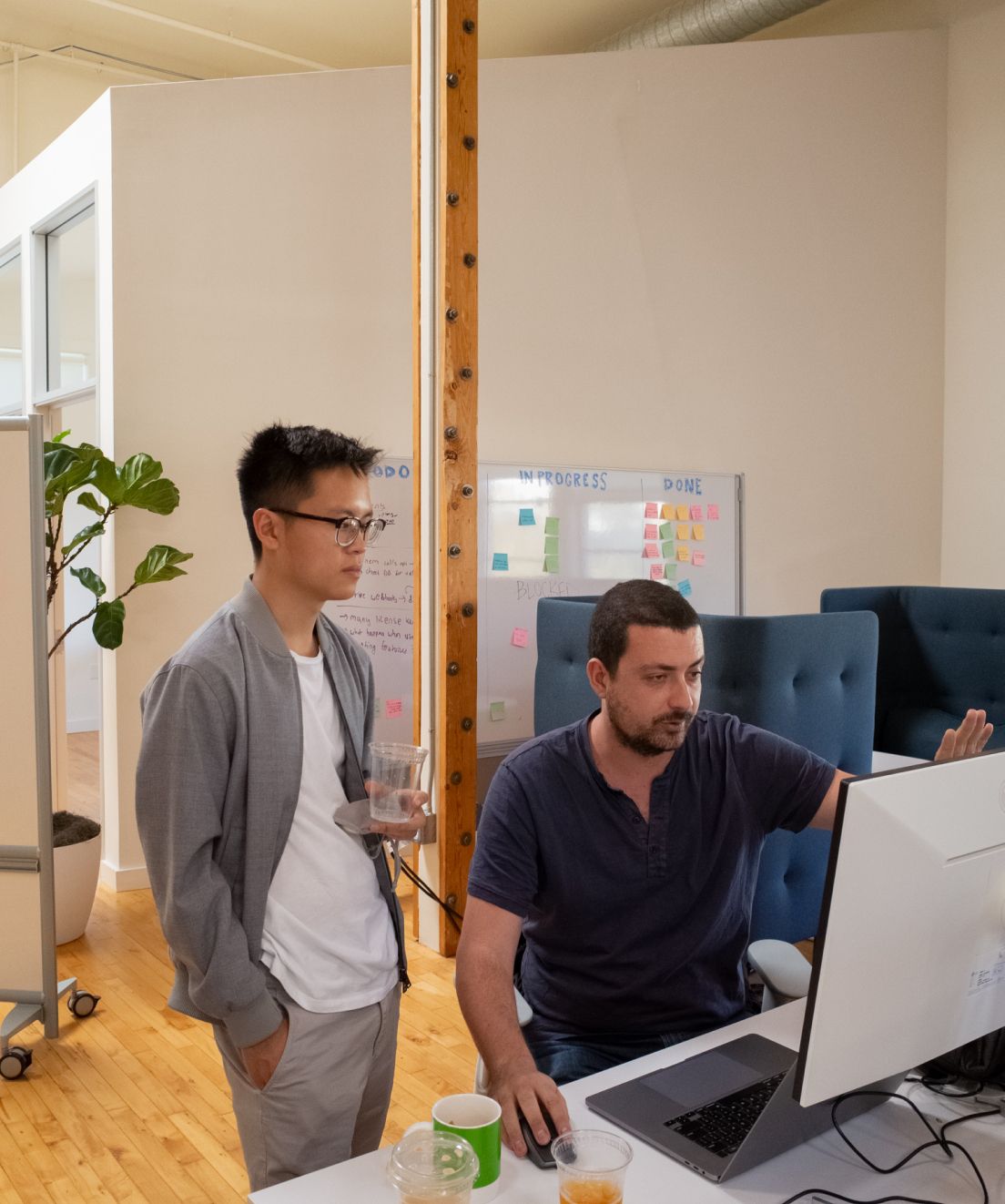Console
Working at Retool
Retool’s goal is to build internal tools remarkably fast. Despite software’s massive impact on our lives, software development hasn’t fundamentally changed in the past two decades. At Retool, we’re thinking about what comes after programming languages: coding from scratch isn’t something most companies should be doing in 15 years. We’re starting with internal tools but our ambitions are much larger.
Tech stack
TypescriptNodeKubernetes
How engineering works at Retool
How are the teams structured?
We structure teams to optimize for both autonomy and focus. In general, our teams are horizontal and span a large part of our product surface area. For example, our app building team is the entirety of the core product – from layout to UI to debugging code to the very frameworks that Retool is built on. Similarly, the dev toolchain team comprises all of the tooling that a Retool builder could benefit from in the Retool environment: testing, source control, observability, etc. We have teams for the entire product surface area, several emerging businesses, our (internal) developer experiences, our cloud/data stack, and more!
We expect most product engineers to span the stack, though we also have deeply specialized folks for both the backend and frontend.
Tech stack
We deploy in Kubernetes, Typescript/React on the Frontend, Typescript/Node on the backend, and Postgres at the persistence layer. Our data/observability stacks are all modern.
What tools do engineers use?
GitHub, Datadog, Amplitude, BigQuery, BuildKite, Sentry, k8s, and plenty more here. The neat thing is we can also supplement a lot of our work with Retool dashboards and apps! For example, our OKRs/product metrics are presented in Retool apps!
Can developers pick their own tools?
Absolutely. We believe in moving fast and providing a lot of autonomy to our team. Especially if something can be tested locally before rolling out, we’ll embrace it. As an example, our CI recently went through a refactor when one of our engineers explored several options before landing on BuildKite.
How does the development process work? What's the process for working through bugs, features and tech debt?
- We support both cloud releases and on-prem (which itself is managed through our enterprise sales team and our efficient self-hosted path) variants.
- On cloud, we’re a modern CI/CD team – we cut our build daily and deploy same-day through staging and into production.
- For on-prem, our releases are batched into stable builds and released via those batches.
- With respect to how we work through features vs debt, have a fairly consistent portfolio approach to taking on work and like to pay down debt through the lens of feature-level work and company impact. In doing so, we can maintain a prioritization framework between the two.
- We plan quarterly, and teams locally plan leading up to that. We love getting everyone involved for planning, especially since we believe domain expertise is established by all members of our team.
How does code get reviewed, merged, and deployed?
- We have a fairly standard peer review process – code needs to be signed off by one peer on the team, though we have escape hatches for emergency deploys, hotfixes, etc.
- Engineers are able to merge their own PRs directly into the main branch, and code is taken out daily through a centralized process. That said, there’s always the ability to deploy more as necessary.
What is the QA process?
We rely heavily on automation and tests to ensure code is robust and correct. We currently don’t have a QA org, somewhat for deliberate reasons – we don’t want to diffuse the responsibility and want SWEs accountable to the quality of their work. This also encourages the right balance of automation and coverage.
What are some recent examples of interesting development challenges solved by internal teams as part of building the product?
Building a real-time app development environment and it’s natural extensions, for starters :) How do we support multiple concurrent users? How do we version control Retool apps and help our customers deploy them across environments? How do we support deep native integration to third party services (data warehouses, datastores, custom APIs, etc)? The surface area that powers Retool today is so vast, and we’re also innovating in adjacent areas!
The thing that’s most exciting about Retool is how much of a platform it is – just permuting components + resources + code + Retool versions by our customer leads to an unbounded set of possibilities. That’s fundamentally what allows our customers to build anything with the product. By extension, supporting it across all the permutations as we deploy at warp speed is a challenging infra/correctness problem.
There’s a lot more here – from building a best-in-class layout and drag-n-drop engine, running untrusted code safely, the tension between product extensibility/power and performance, and making Retool even more accessible and powerful.
How does on-call work?
We have multiple on-call rotations, mapping mostly to our product teams. Engineers go on-call once every couple of months, and we pair primary rotations with secondary support.
Hiring process at Retool
How does the application process work? What are the stages and what is the timeline?
Once you apply through our website, we will review your application and move to our multi-step interview process below:
- Recruiter screen: this interview is an opportunity to chat with one of our recruiters about your background and what you are looking for in your next role. It is also a chance to ask questions about our process and the company.
- Phone screen: during the technical phone screen you’ll be presented with a problem that you'll solve over screen share. This interview is meant to highlight how you think through problems, communicate your thoughts, and design algorithms.
- Onsite Interview: you’ll meet with 4-5 engineers during a round of virtual onsite interviews. Each interviewer will have a distinct focus area covering topics such as general programming and product + systems design.
- Timeline: if all goes well post onsite, we’ll move straight to an offer. The overall interview process (pending candidate availability) should take no more than 2-3 weeks.
What is the career progression framework? How are promotions and performance reviews managed?
We have internal employee levels that are tied to certain expectations so employees have a clear understanding of what success looks like in your role. We have review cycles twice a year and pending on performance relative to the expectations of an employee's level, they will be eligible for a compensation adjustment.
About Console
Console is the place developers go to find the best tools. Each week, our weekly newsletter picks out the most interesting tools and new releases. We keep track of everything - dev tools, devops, cloud, and APIs - so you don't have to.
Subscribe to the weekly Console newsletter
An email digest of the best tools and beta releases for developers. Every Thursday. See the latest email


